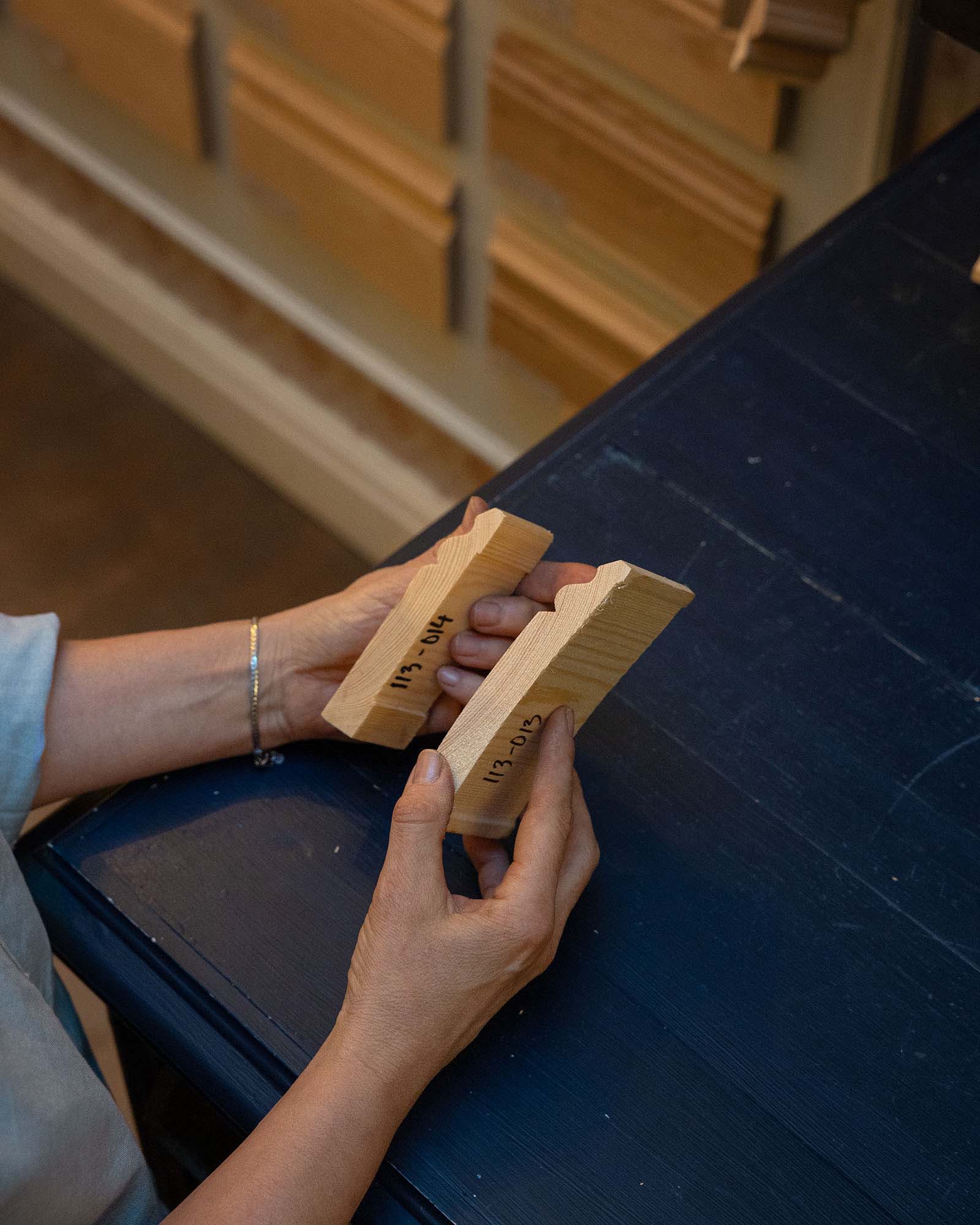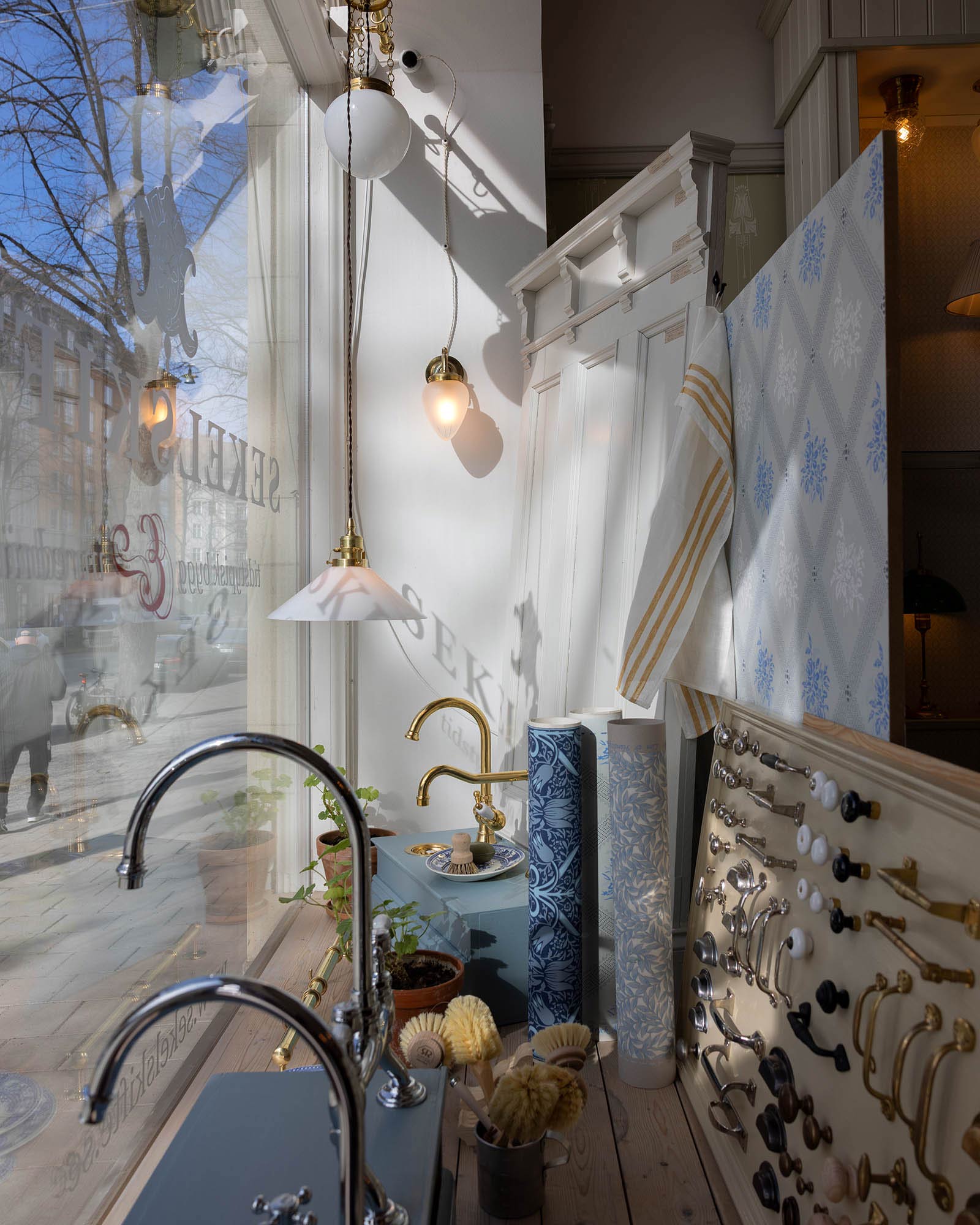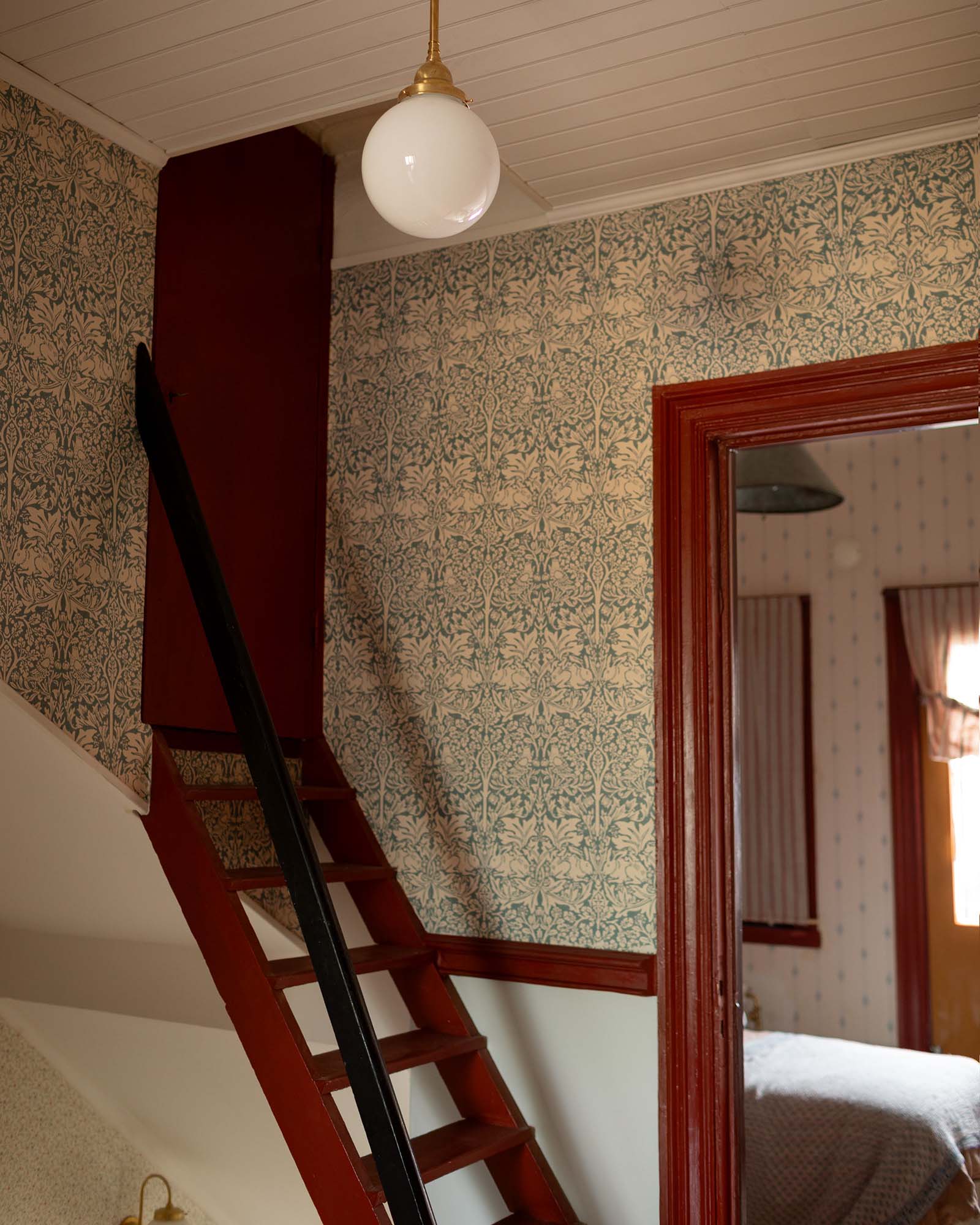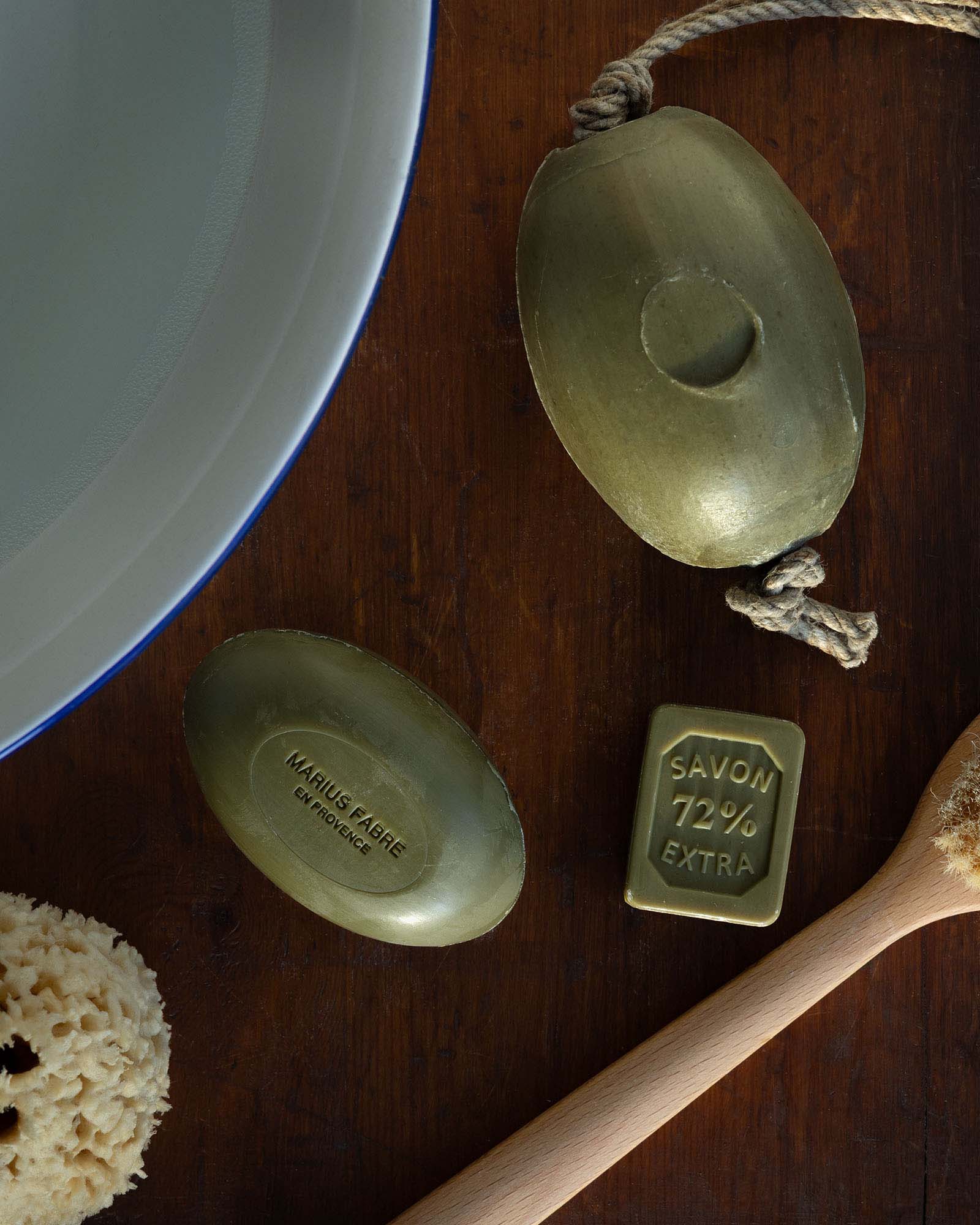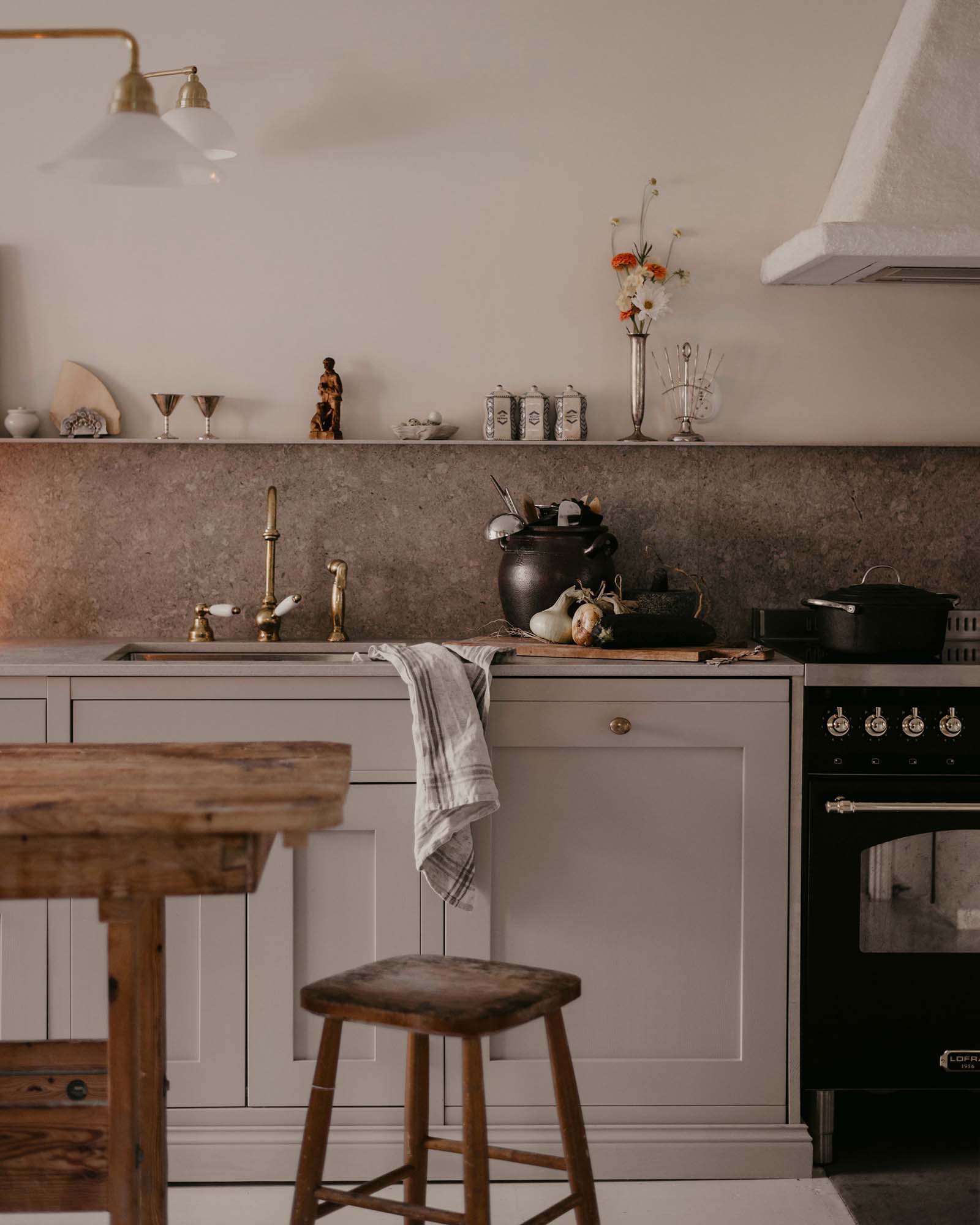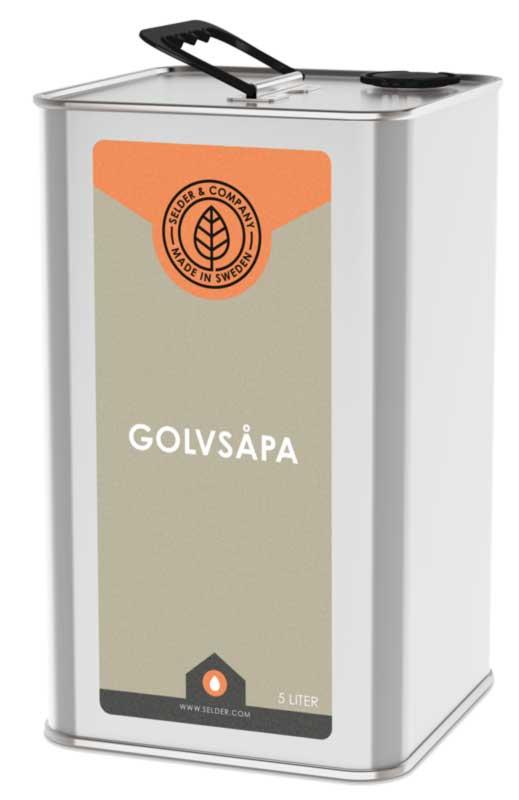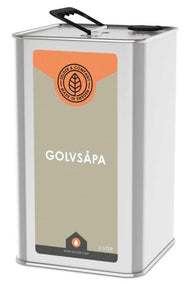A traditional Scandinavian soap floor is undoubtedly very beautiful. Done right, it is also easy to maintain and resistant to dirt and wear far better than you might think.
However, there is a misconception about how to achieve a classic soap floor. Contrary to what one might be led to believe, it is not about scrubbing the floor until the surface reached a certain result. The mechanical wear that arises in conjunction with kalilutet in the soap has a tendency to damage the softer parts (spring wood) of the floor and they risk simply being ripped out of the floor prematurely.
The correct treatment is to saturate the floor with soap, let it dry out and then swab the floor. The dried soap forms a solid gel layer in the surface texture of the wood which not only gives a certain hardness, but also a resistance to dirt.
By mopping the floors with cold water, the floor gives off a small portion of the soap which acts as a detergent.
At the beginning of the process, the floor will adopt a yellow tone and even some mottling may occur depending on how much soap different parts of the wood manage to absorb. The yellow color and any patchiness will fade away over time. Frequently mopping the floors with cold water will speed up the process. (See full job description below)
If you're not sure whether this method is right for you, we recommend that you make a test on a piece of wood of the same type as your floor. Then you can both see how much soap takes the floor, how yellow it gets and how long the whitening process takes when you periodically wipe the wood with a wet cloth. Our tests show that it takes between 5-8 wipes and 1-2 weeks before the wood begins to assume a shade in line with what you would expect as an end result.
WORKING INSTRUCTIONS
1. Add the soap on the floor with a broad brush or a gray rubber squeegee (a black color is also possible) as evenly as possible. With a brush, it is easier to get smooth results, but it takes a little longer. As long as the floor absorbs soap, continue to add on, i.e., you continue until the wood is saturated. Any excess can be brushed off when the soap dries. You then brush against the direction of the fibers so as not to scratch the spring wood (wood softer parts).
2. When the floor soap has been completely absorbed and the surface is completely dry, you can polish with a scrubbing machine with a fine-grained buff.
3. From here on, you keep on regularly mopping the floor to achieve the desired result. The water must be cold so that the soap layer doesn't disappear upon drying.
Once dirt starts to become difficult to remove by wet mopping, it is time to treat the floor with soap again. This typically occurs after 3 to 5 years with normal wear and cleaning.
Consumption: 1 liter covers 5-10 m2 depending on wood species and surface structure.
Note: Please use gloves when working with the soap when it is basic and will therefore dry out the skin. Concentrated soap will also remove linseed, so always make sure to mask any trim list if these are painted with linseed oil-based paint.
To get a traditional soap floor with that perfect bleached look takes time. If you don't feel that you have time to wait out this process, we recommend considering a different floor treatment.
Soap treated floors are relatively sensitive to fat and grease stains, which makes them less suitable for kitchens and such areas.
Made in Sweden
The product is made in Sweden from the finest raw materials.




























































































